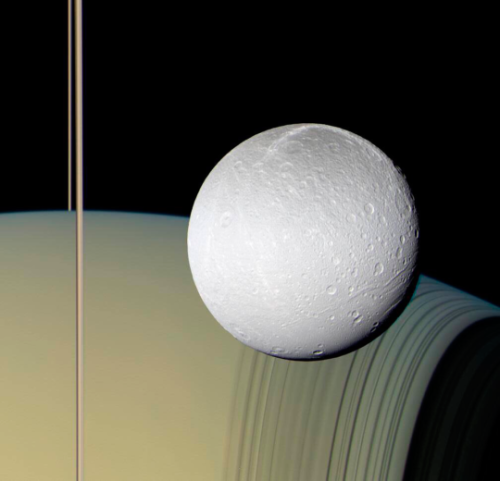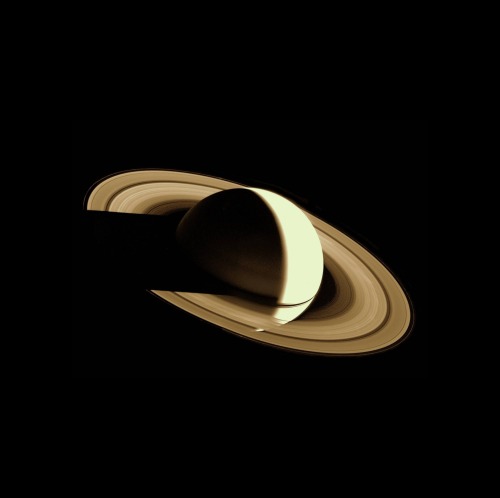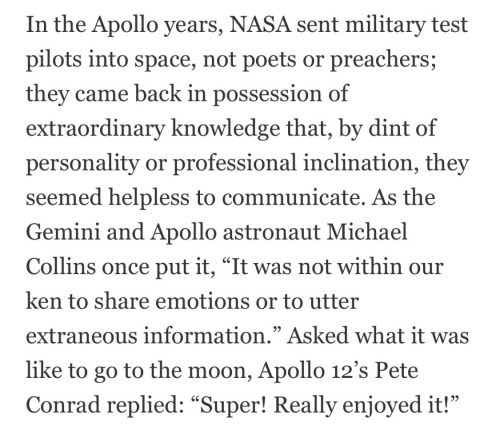Hey. Why Isn’t The Moon Landing A National Holiday In The US. Isn’t That Fucked Up? Does Anyone Else
Hey. Why isn’t the moon landing a national holiday in the US. Isn’t that fucked up? Does anyone else think that’s absurd?
More Posts from Ad-astra-affecte-spe and Others


Lunar halo
@picabuzz
[...] while compartmentalization and replication are important, they are aspects of what life is and does, but they do not address the why of life. The why of life is metabolism. By completing the circuit of life, biology harnesses energy from its environment. Technically speaking, this means that biology actually helps the universe cool faster; it increases the entropy of the universe. This is why the universe needs life.
Alien Oceans by Kevin Peter Hand
Our Weird and Wonderful Galaxy of Black Holes
Black holes are hard to find. Like, really hard to find. They are objects with such strong gravity that light can’t escape them, so we have to rely on clues from their surroundings to find them.
When a star weighing more than 20 times the Sun runs out of fuel, it collapses into a black hole. Scientists estimate that there are tens of millions of these black holes dotted around the Milky Way, but so far we’ve only identified a few dozen. Most of those are found with a star, each circling around the other. Another name for this kind of pair is a binary system.That’s because under the right circumstances material from the star can interact with the black hole, revealing its presence.
The visualization above shows several of these binary systems found in our Milky Way and its neighboring galaxy. with their relative sizes and orbits to scale. The video even shows each system tilted the way we see it here from our vantage point on Earth. Of course, as our scientists gather more data about these black holes, our understanding of them may change.

If the star and black hole orbit close enough, the black hole can pull material off of its stellar companion! As the material swirls toward the black hole, it forms a flat ring called an accretion disk. The disk gets very hot and can flare, causing bright bursts of light.

V404 Cygni, depicted above, is a binary system where a star slightly smaller than the Sun orbits a black hole 10 times its mass in just 6.5 days. The black hole distorts the shape of the star and pulls material from its surface. In 2015, V404 Cygni came out of a 25-year slumber, erupting in X-rays that were initially detected by our Swift satellite. In fact, V404 Cygni erupts every couple of decades, perhaps driven by a build-up of material in the outer parts of the accretion disk that eventually rush in.

In other cases, the black hole’s companion is a giant star with a strong stellar wind. This is like our Sun’s solar wind, but even more powerful. As material rushes out from the companion star, some of it is captured by the black hole’s gravity, forming an accretion disk.

A famous example of a black hole powered by the wind of its companion is Cygnus X-1. In fact, it was the first object to be widely accepted as a black hole! Recent observations estimate that the black hole’s mass could be as much as 20 times that of our Sun. And its stellar companion is no slouch, either. It weighs in at about 40 times the Sun.

We know our galaxy is peppered with black holes of many sizes with an array of stellar partners, but we've only found a small fraction of them so far. Scientists will keep studying the skies to add to our black hole menagerie.
Curious to learn more about black holes? Follow NASA Universe on Twitter and Facebook to keep up with the latest from our scientists and telescopes.
Make sure to follow us on Tumblr for your regular dose of space: http://nasa.tumblr.com

an actual true color photograph showing Saturn, its rings, and one of its moons taken by the Cassini space probe orbiting 23.8k miles away, October 11, 2005


Saturn observed by space probe Voyager 1 on November 16, 1980
Credit: NASA
-
 yacemexists reblogged this · 1 week ago
yacemexists reblogged this · 1 week ago -
 omgbats liked this · 1 week ago
omgbats liked this · 1 week ago -
 globlin-theifer liked this · 1 week ago
globlin-theifer liked this · 1 week ago -
 schrodingers-gay420 reblogged this · 2 weeks ago
schrodingers-gay420 reblogged this · 2 weeks ago -
 schrodingers-gay420 liked this · 2 weeks ago
schrodingers-gay420 liked this · 2 weeks ago -
 weregonnaneedabiggerboat reblogged this · 2 weeks ago
weregonnaneedabiggerboat reblogged this · 2 weeks ago -
 kibo-ichiro reblogged this · 2 weeks ago
kibo-ichiro reblogged this · 2 weeks ago -
 aquastardark reblogged this · 2 weeks ago
aquastardark reblogged this · 2 weeks ago -
 cyangansey reblogged this · 2 weeks ago
cyangansey reblogged this · 2 weeks ago -
 thecarboncryptid reblogged this · 2 weeks ago
thecarboncryptid reblogged this · 2 weeks ago -
 nyarnia-time liked this · 2 weeks ago
nyarnia-time liked this · 2 weeks ago -
 catalllo reblogged this · 3 weeks ago
catalllo reblogged this · 3 weeks ago -
 i-amtransexual reblogged this · 3 weeks ago
i-amtransexual reblogged this · 3 weeks ago -
 wizardinremission reblogged this · 3 weeks ago
wizardinremission reblogged this · 3 weeks ago -
 hollypop reblogged this · 3 weeks ago
hollypop reblogged this · 3 weeks ago -
 sitzmark liked this · 3 weeks ago
sitzmark liked this · 3 weeks ago -
 the-dandy-savage liked this · 3 weeks ago
the-dandy-savage liked this · 3 weeks ago -
 chaos-corner liked this · 3 weeks ago
chaos-corner liked this · 3 weeks ago -
 mydoctors reblogged this · 3 weeks ago
mydoctors reblogged this · 3 weeks ago -
 redsparrow12 reblogged this · 3 weeks ago
redsparrow12 reblogged this · 3 weeks ago -
 korra-of-the-watertribe reblogged this · 3 weeks ago
korra-of-the-watertribe reblogged this · 3 weeks ago -
 lostinwonderlandx0x reblogged this · 3 weeks ago
lostinwonderlandx0x reblogged this · 3 weeks ago -
 lostinwonderlandx0x liked this · 3 weeks ago
lostinwonderlandx0x liked this · 3 weeks ago -
 sexyguitaristissexy liked this · 3 weeks ago
sexyguitaristissexy liked this · 3 weeks ago -
 keeta56 reblogged this · 3 weeks ago
keeta56 reblogged this · 3 weeks ago -
 helloclem liked this · 3 weeks ago
helloclem liked this · 3 weeks ago -
 lilyforce06 reblogged this · 3 weeks ago
lilyforce06 reblogged this · 3 weeks ago -
 lilyforce06 liked this · 3 weeks ago
lilyforce06 liked this · 3 weeks ago -
 blogthebooklover liked this · 3 weeks ago
blogthebooklover liked this · 3 weeks ago -
 rose-colored-mess reblogged this · 3 weeks ago
rose-colored-mess reblogged this · 3 weeks ago -
 rose-colored-mess liked this · 3 weeks ago
rose-colored-mess liked this · 3 weeks ago -
 liberal-scum reblogged this · 3 weeks ago
liberal-scum reblogged this · 3 weeks ago -
 vintage-poetess liked this · 3 weeks ago
vintage-poetess liked this · 3 weeks ago -
 a-pale-pink-dot reblogged this · 3 weeks ago
a-pale-pink-dot reblogged this · 3 weeks ago -
 a-pale-pink-dot liked this · 3 weeks ago
a-pale-pink-dot liked this · 3 weeks ago -
 trippymini reblogged this · 3 weeks ago
trippymini reblogged this · 3 weeks ago -
 tintysun liked this · 3 weeks ago
tintysun liked this · 3 weeks ago -
 foxoftheasterisk reblogged this · 3 weeks ago
foxoftheasterisk reblogged this · 3 weeks ago -
 ripdragonbeans reblogged this · 3 weeks ago
ripdragonbeans reblogged this · 3 weeks ago -
 nottheatretrash reblogged this · 3 weeks ago
nottheatretrash reblogged this · 3 weeks ago -
 dulcewhisperlea liked this · 3 weeks ago
dulcewhisperlea liked this · 3 weeks ago -
 realvsable liked this · 3 weeks ago
realvsable liked this · 3 weeks ago -
 puttingherinhistory reblogged this · 3 weeks ago
puttingherinhistory reblogged this · 3 weeks ago -
 idohknow liked this · 3 weeks ago
idohknow liked this · 3 weeks ago -
 classydinocat reblogged this · 3 weeks ago
classydinocat reblogged this · 3 weeks ago -
 classydinocat liked this · 3 weeks ago
classydinocat liked this · 3 weeks ago -
 totally-not-a-dragon-in-disguise reblogged this · 3 weeks ago
totally-not-a-dragon-in-disguise reblogged this · 3 weeks ago

★•Astronomy, Physics, and Aerospace•★ Original and Reblogged Content curated by a NASA Solar System Ambassador
204 posts















